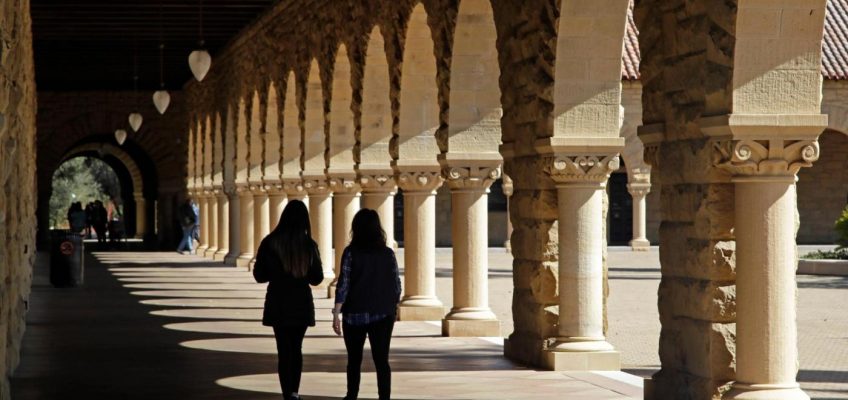While single-family home values have continued to increase in St. Paul, the estimated market value of commercial and industrial properties, as well as apartment buildings, dipped slightly in the past year. Partly as a result, everyday St. Paul homeowners are likely to feel some sting in their property tax bills.
How much of a sting? Brace for a $200 property tax increase next year to a median-value, single-family home in St. Paul, based on combined city, county and school district property tax levies, and then add at least another $100 in higher trash, water, sewer and recycling fees.
“Next year is going to be a hard year,” said Ramsey County Board Chair Victoria Reinhardt, addressing the county board during an Aug. 27 tax trends presentation. Tax burden “is shifting to residential, more so than industrial and commercial. It goes back and forth, depending on what the values are. And we’re looking at higher (tax levy) increases with the city of St. Paul, and our cities in the suburbs, as well. School districts play a huge role in this.”
St. Paul Mayor Melvin Carter’s budget proposal includes a 7.9% increase to the city’s tax levy — or $16.5 million — the sum total of all property taxes collected in the city limits from all property types. That’s a sizable levy increase, though there have been larger ones in the past decade, even without counting years in which legal challenges forced the city to drop street maintenance fees and pay for routine street repair through general property taxes.
The St. Paul City Council has until December to approve the city budget, and changes to the property tax levy are possible. Ramsey County officials plan to make their annual “Tax Trends” presentation to the council on Sept. 11.
Based on his budget proposal, the mayor’s office has estimated that a median value St. Paul home ($275,300 in 2025) will see the city portion of their property taxes go up $133 next year. Also impacting St. Paul homeowners will be fee increases to recycling, trash, sanitary sewer, storm sewer and water charges, which taken together could add another $109 to that total.
About $300 in new taxes and fees
Combined with Ramsey County and Metropolitan Council tax levies, that median-value St. Paul home can expect at least $196 in new property taxes next year — a 5% increase — on top of the $109 in fees. Those totals are subject to change as the levies are tweaked by the time budgets are finalized in December. The St. Paul School District will issue its preliminary levy proposal on Sept. 17.
St. Paul neighborhoods are likely to experience tax levy increases differently, given that average values in different parts of the city are increasing at different rates.
“People think that this is something that we just do arbitrarily, and that is not the case at all,” said Reinhardt, noting that county assessors survey every taxable property in the county at least once every five years. “You can’t purposely inflate or deflate the value of a property.”
In St. Paul, tax increases are expected to be the greatest in Highland Park, where home values are climbing more than 5%. Downtown condo owners could see some savings as a result of home values there declining .8%. Other neighborhoods fall in the middle.
For example, a $413,000 home in the Macalester-Groveland neighborhood is projected to have an estimated market value of $432,700 next year, which would be a 4.7% value increase. If the various proposed tax levies are approved in December as planned, that home’s property taxes would go up about $527, or about 8.5%.
Toward the low end, a $226,000 home in the Payne-Phalen neighborhood is projected to have an estimated market value next year of about $230,000, just a 1.5% increase. Unless proposed tax levies change greatly by December, its property taxes could go up $89, for a 2.8% tax increase.
Tax increases in the Sunray/Battle Creek/Highwood neighborhood are likely to be around $280, or 7%, while Dayton’s Bluff, which is also on the East Side, would experience a $100 increase, or 3%. Frogtown homeowners can expect property taxes to go up $178, or 6.2%. In Hamline-Midway, the tax burden would go up $276, or 7.7%.
Apartments and commercial/industrial values drop
While residential property values have picked up about 3.9% in St. Paul, commercial values have dropped 1.5%, industrial values have dropped 2.4% and apartment buildings have dropped in value by 4.5%, according to the Ramsey County assessor’s office.
The past year has been characterized by “steady growth in the residential market,” said County Assessor Patrick Chapman, in a presentation to the county board on Tuesday. Ongoing large-scale real estate development projects include Highland Bridge and The Heights in St. Paul, as well as more than 200 townhomes planned at Pioneer Commons in Little Canada.
“Development continues, and we’ve got several large projects all over the county,” Chapman said. “The industrial market is remaining strong (but) it’s kind of leveling out. Apartments are stabilizing after record growth. … Nobody is building a lot of retail lately. The office market, we’re still trying to figure out what it’s going to look like with the new hybrid work model. Conversions (from office) to residential are going to play a role in stabilizing this market scope.”
A few factors will help soften tax impacts or bolster city and county budgets. Among them, St. Paul received an $8.8 million increase in local government aid in 2024, which will stay fairly flat in 2025, increasing about $131,000. It’s still the highest allocation since 2002.
A metro-wide “fiscal disparities” program shares a certain amount of property tax revenue from commercial-industrial properties across counties. Ramsey County, which received about $50 million from the program last year, is expected to receive $56.8 million in 2025, a notable increase of 11.9%.
For the purpose of calculating taxes on their primary residence, the state allows homeowners to exclude up to $38,000 in property value on their homestead property on a sliding scale, with no exclusion for properties valued over $517,200.
Ramsey County officials noted this week that more property owners throughout the county are challenging their estimated market values in court, which is one way to seek tax relief. The number of tax petition filings has increased to more than 1,000 for taxes payable this year, compared to about 700 petitions filed for taxes payable in 2023. That’s partly a reflection of some sudden increases and decreases in commercial-industrial valuations over the past two years, Chapman said.
The city tax levy increased 3.7% last year and about 6.2% in 2022. In 2018, the city shifted how it covers routine street maintenance costs, moving some charges from individual right-of-way maintenance fees to property taxes, which are shared citywide, fueling the city’s 24% tax levy increase that year. The same shift in street maintenance continued in 2023, adding to a levy increase of 14.65%.
St. Paul levy increases by year
•2014: 0%
• 2015: 2.14%
• 2016: 1.9%
• 2017: 7.94%
• 2018: 23.93%
• 2019: 10.46%
• 2020: 5.85%
• 2021: 0%
•2022: 6.17%
• 2023: 14.65%
• 2024: 3.7%
• 2025: 7.9% (proposed)
Related Articles
St. Paul to settle lawsuit after man says EMTs, paramedics disregarded stroke symptoms
Our photographer spent hours and hours at the Fair
Minnesota student math, reading scores still much lower than pre-pandemic levels, statewide assessment shows
For separate killings of St. Paul man, Minneapolis woman, man gets 47-year prison sentence
Other voices: A rent-control lesson in Argentina




